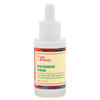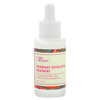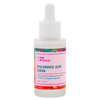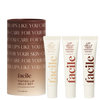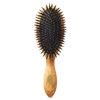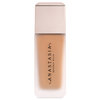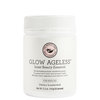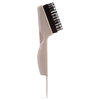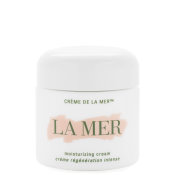Cosmetic Cosmos: NASA’s Surprising Contributions to Beauty
Published Jul 8, 2012

Many think the world of space exploration and technology doesn’t affect them. Yes, most products invented in science fiction will never come to fruition, but Satellite GPS, memory foam, virtual reality, water filters, and even insoles—developed from Moon Boots—are all amazing, NASA-borne breakthroughs. What’s even more surprising is NASA’s contribution to the hair and skin care industry. Not the slather-on-some-lipstick-in-space kind of beauty. The real science, the true innovation that’s helped shape and mold technology! Read on to discover three examples of NASA’s relatively unknown—yet extraordinarily significant—benefactions to the beauty industry.
FROM SPACE TO THE SALON
NASA’s love affair with the hair industry began with its research on nanomaterials. Former NASA scientist Dennis Morrison developed ceramic microcapsules that could release drugs on demand—when placed in a magnetic field, the materials ionized and heated, melting and emptying the microcapsules. Originally, the technology was meant for outer space, but more testing brought the capsules back to Earth, to your hair!
Houston-based Farouk Systems, Inc. (responsible for some of the best flat irons on the market!) incorporated this nanotech into their CHI iron, which stands for Cationic Hydration Interlink. When the plates are heated, the ceramic releases ions that smooth the hair shaft, making it easier to style.
And if you thought that was fascinating, Farouk even went a step further in 2004, incorporating NASA’s nanosilver sterilization technology—essentially, the Windex of space—into their line of irons and nail polishes. Allow me to explain.
To keep spacecraft surfaces clean without the fumes of a typical cleaning agent, NASA scientists turned to nanosilver, a material with known antimicrobial properties. Silver nanoparticles (between 1 nm and 100 nm in size) are amazingly talented at sanitizing things, and contaminants like fungi and bacteria die on contact with a nanosilvered surface. At the spa or salon—or in orbit—hygiene is a big deal.
A PHYSICIST'S ACCIDENTAL SECRET TO ANTI-AGING
We all know Crème de la Mer as the fancy stuff JLo smears all over her body, but the luxury skin cream has a fascinating history that traces 40 years back to NASA aerospace physicist Max Huber. Suffering horrific chemical burns on his face after a routine laboratory experiment accidentally exploded, Huber decided to formulate his own burn remedy, since nothing on the market worked. After 12 years of heavy lab work and experimentation, he finally perfected a concoction that dramatically smoothed, improved, and refined his skin—the miracle-worker we now know as La Mer. Pioneering biofermentation research, Huber fortified his sea kelp-based cream with iron, vitamins, and essential oils, and exposed the formula to light waves, sound waves, and magnetized gemstones to release powerful energies.
LET THERE BE (RED) LIGHT!
NASA may not be known for their amazing facials, but a light technology used to grow plants in space actually helps human cells grow and heal faster. NASA employs specialized light emitting diodes (LEDs) to provide red light for plants growing in the Space Station, but researchers discovered many other applications here on earth. The technology shows promise for bone marrow transplant patients, and those looking to give their complexion an anti-aging boost. The non UV Red Light technology helps reduce lines, wrinkles, sun spots, acne, and stretch marks. How? The near-infrared light penetrates the dermis at a specific wavelength, activating faster and healthier cell regeneration. Cosmic botany at its finest.
Featured Products
You Might Also Like
-

Culture
Wonderland: The Story Behind Beauty’s Fairy Tale Portraits
- 450
-

News
Pantone’s New Foundation Matrix
- 346
-

Hair
Can You Pull Off Rock Star Hair?
- 35
-

Celebrity Looks
Met Costume Institute Gala Hair: Evan Rachel Wood
- 9
-

Celebrity Looks
Olivia Wilde at the "Cowboys and Aliens" Premiere
- 12
-

Photo Call
Inspiration: Beauty and the Beast
- 84
-

Culture
Beauty Blast From The Past: Growing Up Lipstick
- 273
-

Celebrity Looks
Met Costume Institute Gala Makeup: Blake Lively
- 14



